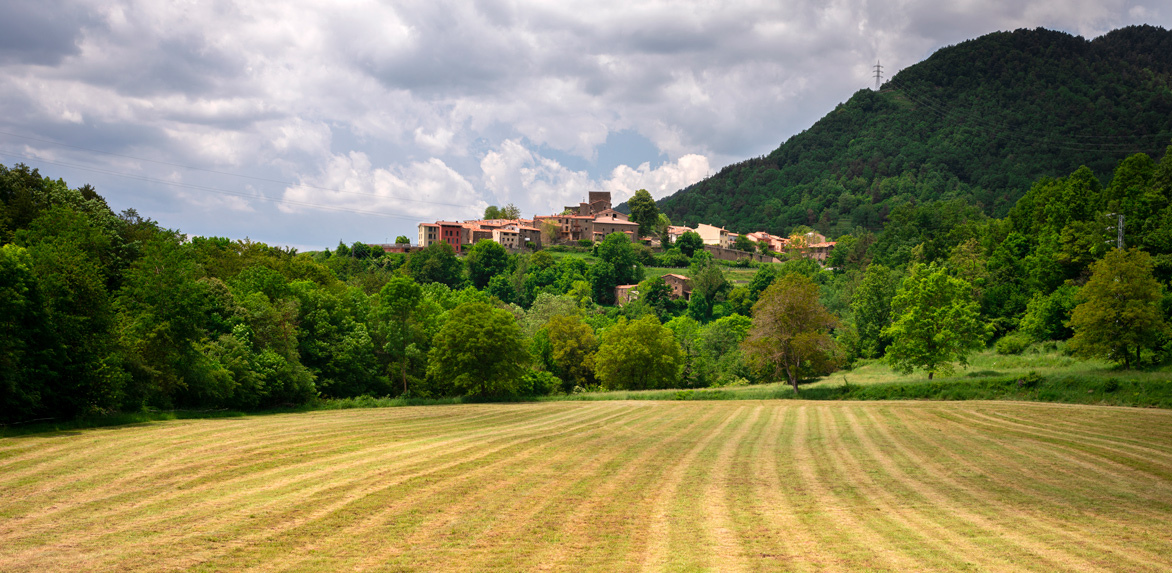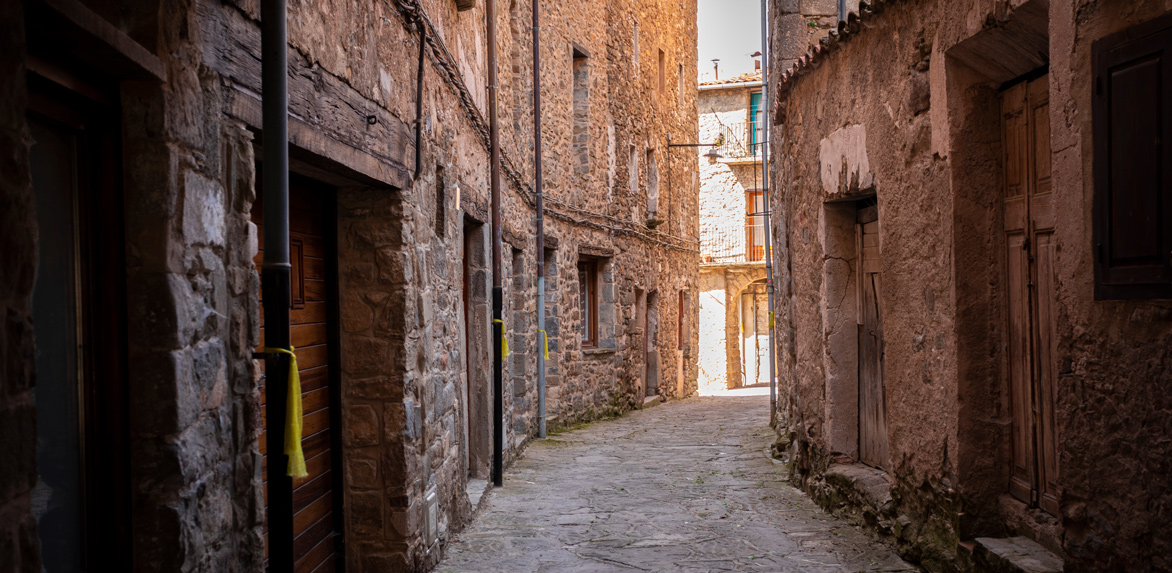Vallfogona de Ripollès lies on the slopes of the Puig Estela and Milany mountains and is surrounded by beautiful countryside, woods and paths, making it an ideal destination for hiking and nature outings. Its well-preserved medieval old town consists of a central square around which the old houses , which have retained their original thresholds and balconies, were built in a circle. Discover the medieval secrets hidden in its magnificent rural environment.
El municipi de Vallfogona de Ripollès
-
Origins
The first mentions of the Vallfogona date back to 896, when the nearby monastery of Sant Joan de les Abadesses owned property and land there. The village was created in accordance with the wishes of the lords of Milany, who wanted a community of people around La Sala Castle.
-
Did you know that…?
The conjuratory or reliquary of Vallfogona was used in ancient times to ward off storms and bad spirits! It is located at the end of the flat area upon which the old church of Sant Julià stood. It collapsed in the early 1980s and was rebuilt, in 1985, with much of its original stonework.
-

The medieval old town
The medieval complex in the oldest part of the village started to be built under the shelter of the castle in the 13th century. It used to be walled and the interior could only be accessed via three gates: La Muralla, Ponent and Migjorn.
-
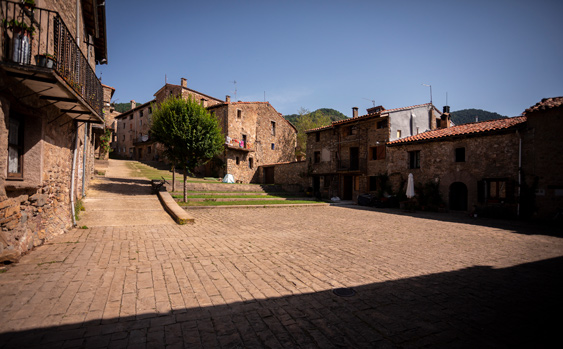
The square
The oldest part of the village consisted of the square and the old streets where the chapel and the inn stood. The streets of the medieval old town were paved, and the houses, which were built in a circle around the square, still retain their original thresholds and balconies.
-
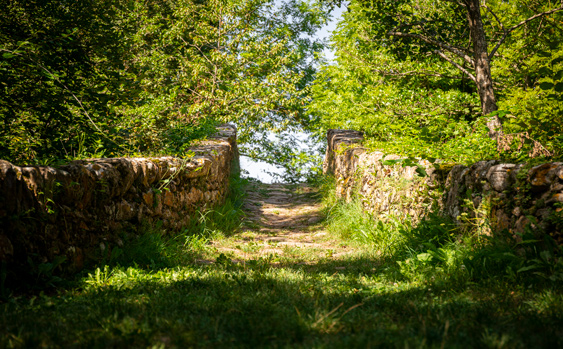
The medieval bridge
It was built in the 14th century by the lords of Milany, who had moved from their castle to Vallfogona Castle, to span the Vallfogona creek and link the village to Milany Castle and to Vidrà.
-
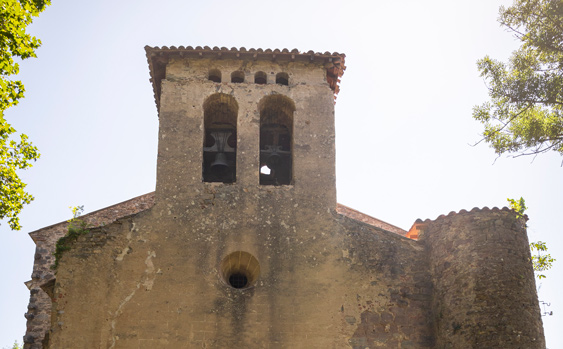
Sant Julià
The old parish church of Sant Julià is located 200 metres from the village and dates back to the 10th century. It is now an amalgamation of a large Baroque rear and a smaller Romanesque front. Since the partial collapse of the Baroque part in the 1960s, the church of La Salut has taken on the role of parish church.
-
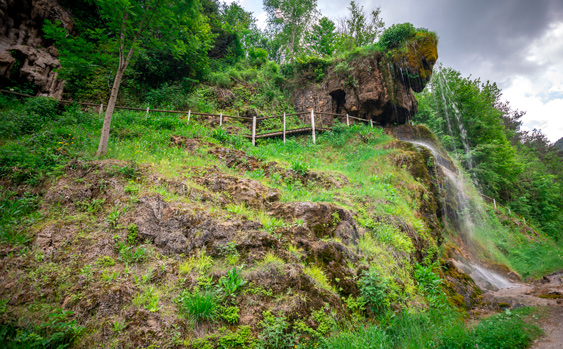
La Tosca
La Tosca del Pinetar rock formation is dozens of metres thick. It was formed slowly by the continuous depositing of calcium carbonate dissolved in the water of La Tosca spring, creating an incredible waterfall, where the rock traps the stems and leaves of plants and takes on their forms.
-

La Masica
The Masica stream is in the Serres de Milany-Santa Magdalena and Puigsacalm-Bellmunt area of natural interest. It features impressive waterfalls amid the flora and fauna typical of Pre-Pyrenean streams.
-

Pinetar de l'obra
This is the archaeological site of an ancient kiln used for the production of tiles and bricks, located some 200 metres from La Tosca. Local residents collaborated on this heritage recovery project with a number of scientific institutions.
More information
-
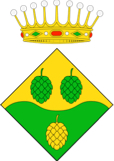
Vallfogona de Ripollès Town Hall
MORE INFO
Resources
Other towns
-

Sant Joan de les Abadesses
A town that breathes history.Sant Joan de les Abadesses lies at the centre of a valley in the Pre-Pyrenees...
MORE INFO -
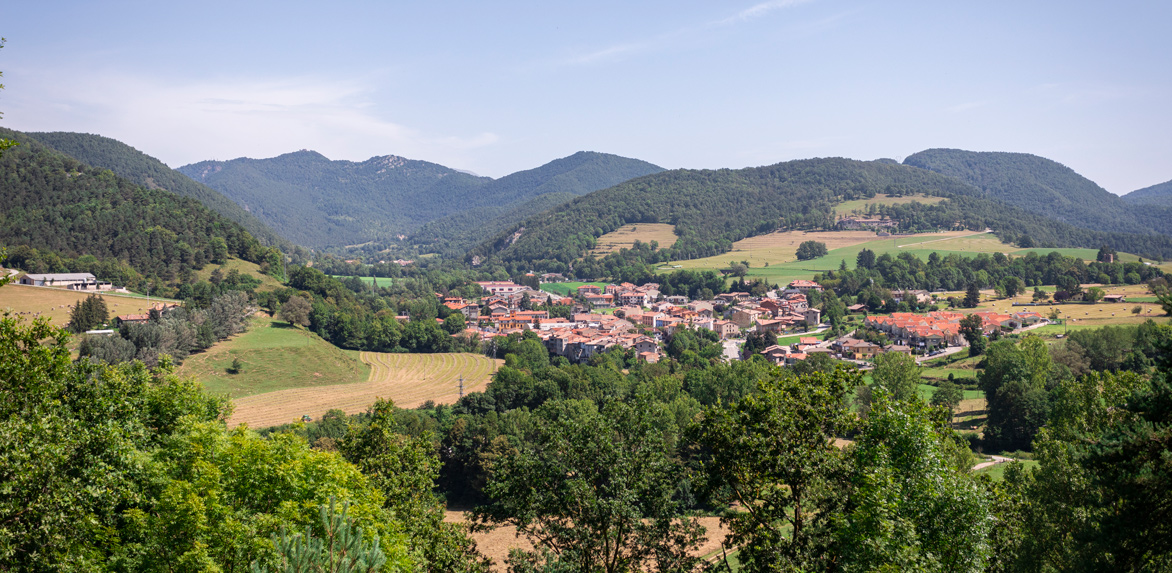
Sant Pau de Segúries
Sant Pau de Segúries, the gateway to the Camprodon Valley and its verdant rolling countryside irrigated by the River ...
MORE INFO -
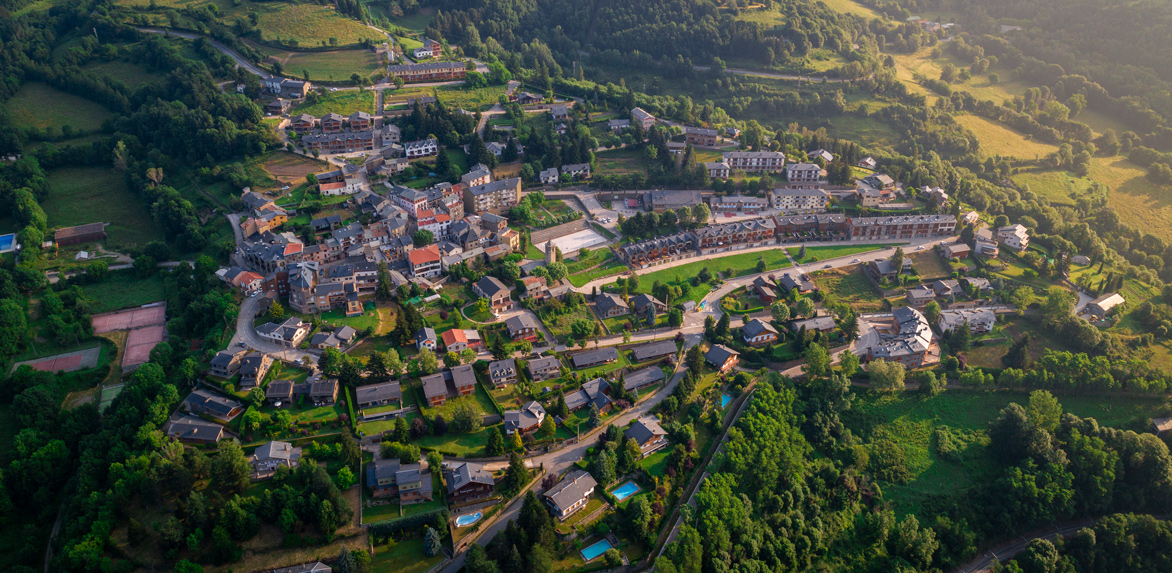
Planoles
Nestled in a privileged location in the Pyrenean Rigat valley lies Planoles, a charming little village which invites you to...
MORE INFO
